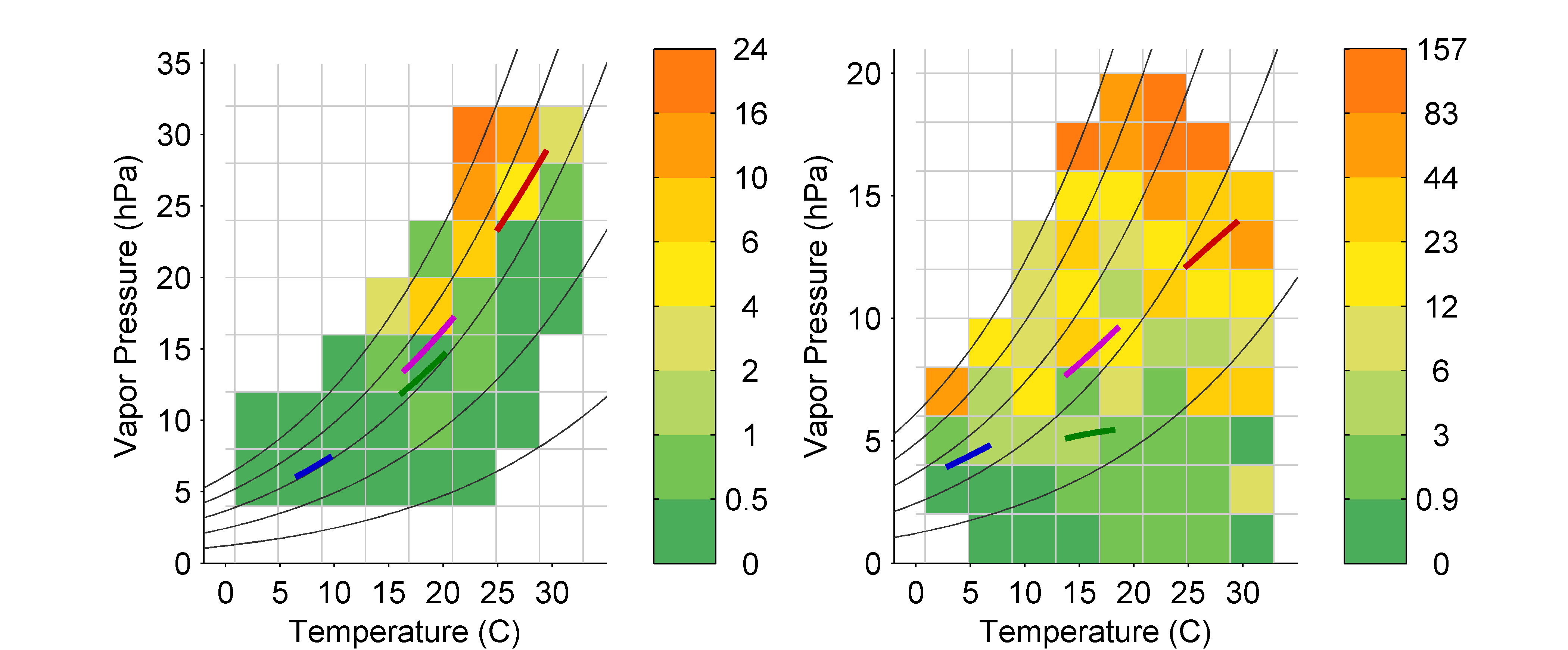Climate is everything, and so everything is climate, right? I’m working on diverse projects related to climate and that are not about air quality, fire, and lightning.
****************
ENSO
Eric Webb (Masters degree, Fall 2020) and I published a methodology paper about a newly re-envisioned Oceanic Nino Index using an ensemble of over 30 input datasets in the International Journal of Climatology (Open Access). We called the new ENSO index the “Ensemble ONI”. Eric previewed some of the now-published methods in his AMS 2020 presentation titled Reanalysis of the Extended Multivariate ENSO Index, and has both outlined some of what we did for the IJOC paper and provided up-to-date values of Ensemble ONI at his “Webberweather” webpage. I am also updating Ensemble ONI and providing quick access to the central value of Ensemble ONI, and the 1-sigma uncertainty range around that central value – please go to my Publications webpage for the link to the paper, the data, and eventually the Matlab code that Eric and I are still cleaning up.

Figure from Webb and Magi 2022 (International Journal of Climatology) showing the state of the tropical Pacific Nino3.4 region and the uncertainty, both of which we calculated using an ensemble of 32 input datasets.
****************
Rocks and Climate

Figure from Eppes et al 2020 (Geophysical Research Letters) showing how the mechanical cracking rate increases with increasing vapor pressure, even when we control our analysis for mechanical stress. The black lines are constant RH, and the colorful lines are the changes expected by end of the century.
My colleagues Dr Missy Eppes (geomorphologist) and Dr Jack Scheff (climate scientist) and I worked hard to pull together our disciplines to study a data set Missy collected. Several years ago, she placed a couple of boulders – rocks you can pick up but that would hurt to kick – in two well-instrumented locations. We began to unpack the multiyear dataset and found that increasing vapor pressure generates higher rates of mechanical weather, which we think is both interesting and important. The latter because vapor pressure is increasing due to global warming, and will continue to increase as the temperature rises. This forms the foundation of the well-known water vapor feedback. Check out our Geological Society of America 2019 presentation Warmer and Wetter Climates Accelerate Mechanical Weathering, AGU 2020 presentation It’s more than stress – field evidence for climate’s influence on rates of rock fracture, or just read our GRL paper Warmer, Wetter Climates Accelerate Mechanical Weathering in Field Data, Independent of Stress-Loading (PDF) for more.
****************
Changing Seasons while the World Warms
Allison Van Ormer (Masters, started Fall 2021) and I are working on studying observed changes in the spread and location of seasonal temperature. She presented her preliminary work as a poster at the Southern Appalachian Weather Conference in March 2022, and stay tuned for updates!
****************
Climate Future in North Carolina
Andrew Robinson (Masters, finished Spring 2022) and I worked on studying CMIP futures (RCP8.5) and how the results (the projections) translate to impacts at local-to-regional spatial scales using downscaled climate model output from the Multivariate Adaptive Constructed Analogs (MACA) project by Abatzoglou and Brown (2011) “A comparison of statistical downscaling methods suited for wildfire applications”. Andrew presented very preliminary results at the 2021 Carolinas Climate Resilience Conference, and closer-to-final results at the Southern Appalachian Weather Conference in March 2022.